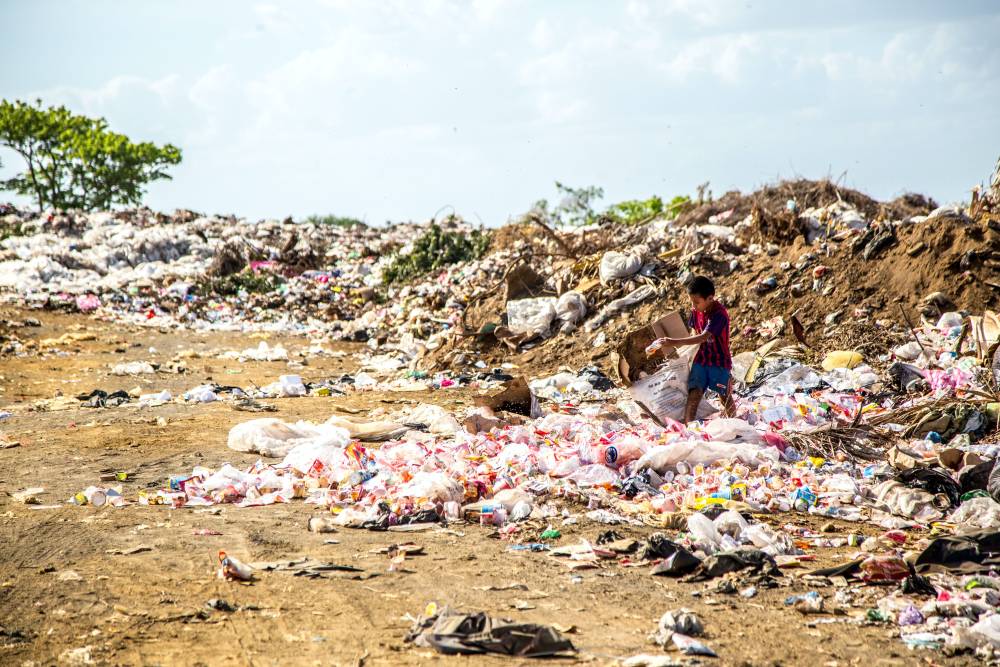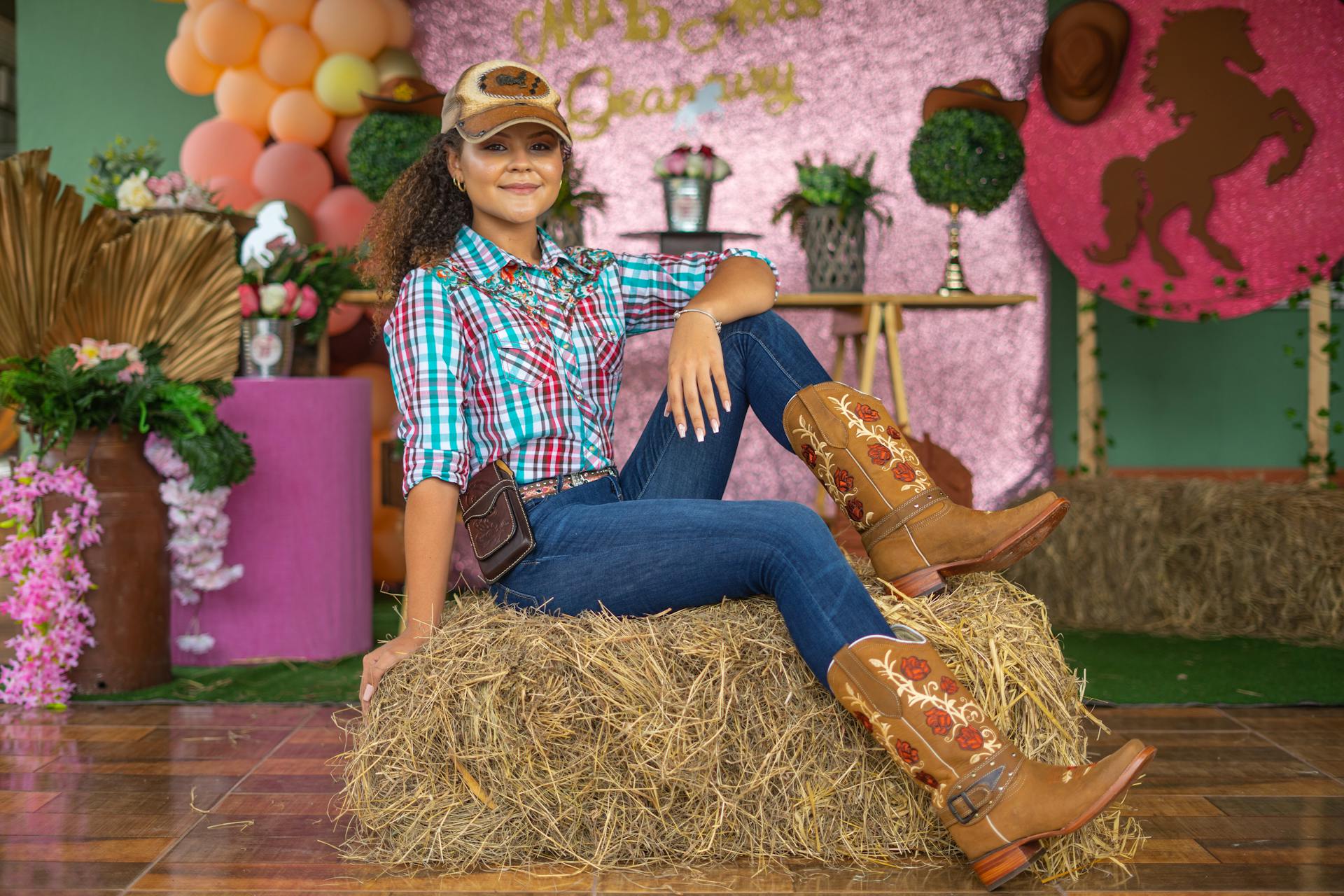
Rayon is one of the most common fabrics used in the fashion world, alongside cotton and polyester. It's a semi-synthetic fabric or man-made cellulosic fiber.
There are many different types of rayon and manufacturers using varying processes. Therefore, the time it takes for rayon to biodegrade varies between a few weeks to a few years.
Whether a fabric is biodegradable is important for conscious consumers shopping for sustainable fashion around the world. Even if rayon isn't made from petroleum-derived products like nylon or acrylic, it isn't considered a natural material.
Rayon, also known as viscose rayon, is made from renewable resources, plants, wood, or agricultural waste. But most rayon production is polluting as it requires lots of water, energy, and chemicals.
Fashion brands and designers use rayon because it's cheap and accessible, a perfect choice for low-quality and low-cost clothing. Fast fashion made clothing a disposable commodity.

With sustainability on the mind of more consumers today, questions about
the environmental impact of clothes and their biodegradability become increasingly important.
Synthetic fabrics like polyester, nylon, and acrylic have a disastrous impact. They release plastic microfibers into the environment as well as toxic chemicals.
They also contribute to clothing waste ending up in landfills at an alarming rate. They take a long time to decompose, up to thousands of years in the ocean where temperatures are very low.
Luckily, not all synthetic fabrics are dangerous to the environment. Read up my list of sustainable synthetic fabrics to learn more about environmentally friendly made-fibers.
Rayon is made from plants or wood but requires many chemically-intensive industrial processes to be transformed into a fiber for textiles.
Viscose and rayon fibers are cellulosic fibers made from cellulose. The cellulose extraction and processing are what makes rayon fabrics not eco-friendly in most cases.
Furthermore, most dyes, bleaches, and treatments used in the apparel industry are hazardous. And wearing toxic fabrics put our health at risk.
Fortunately, there are many types of rayon. Some of them are less polluting than others. Some other man-made cellulosic fibers include lyocell, acetate, modal, and cupro. They are made from cellulose-based resources like wood, bamboo, cotton, soy, or coconut.

Although rayon is a man-made fabric, it's not fully synthetic. It doesn't contain petrochemicals.
Man-made cellulosic fibers represent around 6.2% of all textile fiber production worldwide with about 6.7 million tons produced globally each year.
Viscose is a type of rayon fiber and the most broadly used man-made cellulosic fiber. It accounts for around 79% of the total market share with 5.3 million tons produced in 2018.
How long it takes for each material to biodegrade highly depends on its manufacturing process and the environmental conditions. Making clothing from wood or plants requires heavy processing. It's not considered environmentally friendly.
Rayon fabrication can be extremely polluting. It not only consumes large amounts of resources but also heavy chemicals that are toxic to humans and ecosystems if released untreated into the nearby environment.
Learn more about the environmental impact of rayon in my article on why rayon is bad for the environment.
Depending on the conditions present in the environment, rayon can biodegrade in a few weeks. But it can also take up to many years to fully decompose under cold conditions.
According to recent research, cellulose biodegrades very quickly under six weeks with optimal soil moisture of -33 kPa and soil temperature of approximately 25 ºC.

However, Korean researchers pointed out that the more water-repellent rayon fabric is treated, the slower it will decompose. And most semi-synthetic fabrics receive heavy treatments to make them softer, stronger, and elastic.
The biodegradability of rayon fibers in relevant environments (wastewater treatment plants, composting, landfill, soil, seawater) is demonstrated by international standards and certified by international certification organizations such as Vincotte or Din Certo.
Clothing made from man-made fibers such as acrylic, polyester, nylon viscose, and rayon is regarded as a potential source of contamination for marine environments, as reported by faculty scientists.
Plastic litter and its degradation is a huge problem. Microplastic materials (fibers, films, fragments, or granular particles smaller than 5 mm) pollute the ocean and endanger marine life.
The equivalent of one garbage truck of plastic is leaking into our oceans every minute of every day of the year (eight million tonnes each year), according to the 2016 report The New Plastic Economy by World Economic Forum, the Ellen MacArthur Foundation, and McKinsey and Company.
Cellulosic fibers were also reported as an important share of microfibers in a 2011 study. Microplastics facilitates the transfer of pollutants, monomers, and plastic-additives to organisms with uncertain consequences for their health.
It's best for people, animals, and the planet to choose the most environmentally friendly fabric possible when buying new clothing. Organic natural fibers are great options to protect the environment and our skin.

Rayon falling into the category of cellulosic fibers, similar to modal, Tencel, lyocell, and viscose doesn't make it eco-friendly, even if cellulose biodegrades.
Rayon is a very versatile fiber used in a wide variety of applications. It's soft, lightweight, breathable, moisture absorbent, and very comfortable. But it's a conventional man-made material, cheap and highly polluting.
Rayon is used as the primary fiber content or a very large part of the fiber composition in many cheaply produced garments.
Rayon manufacturing processes emit poisonous gas. Heavy chemicals pollute drinking water, the air, and soil. They damage ecosystems, plants, animals, and human health.
An enormous amount of water gets polluted during the production of rayon fibers. To be more environmentally friendly, chemicals used during manufacturing must be fully recovered in closed-loop production processes.
Even if rayon can take a short time to decompose under the right conditions, it adds to waste, pollution, and microfibers landing in the ocean every day.
Was this article helpful to you? Please tell us what you liked or didn't like in the comments below.






























0 comments